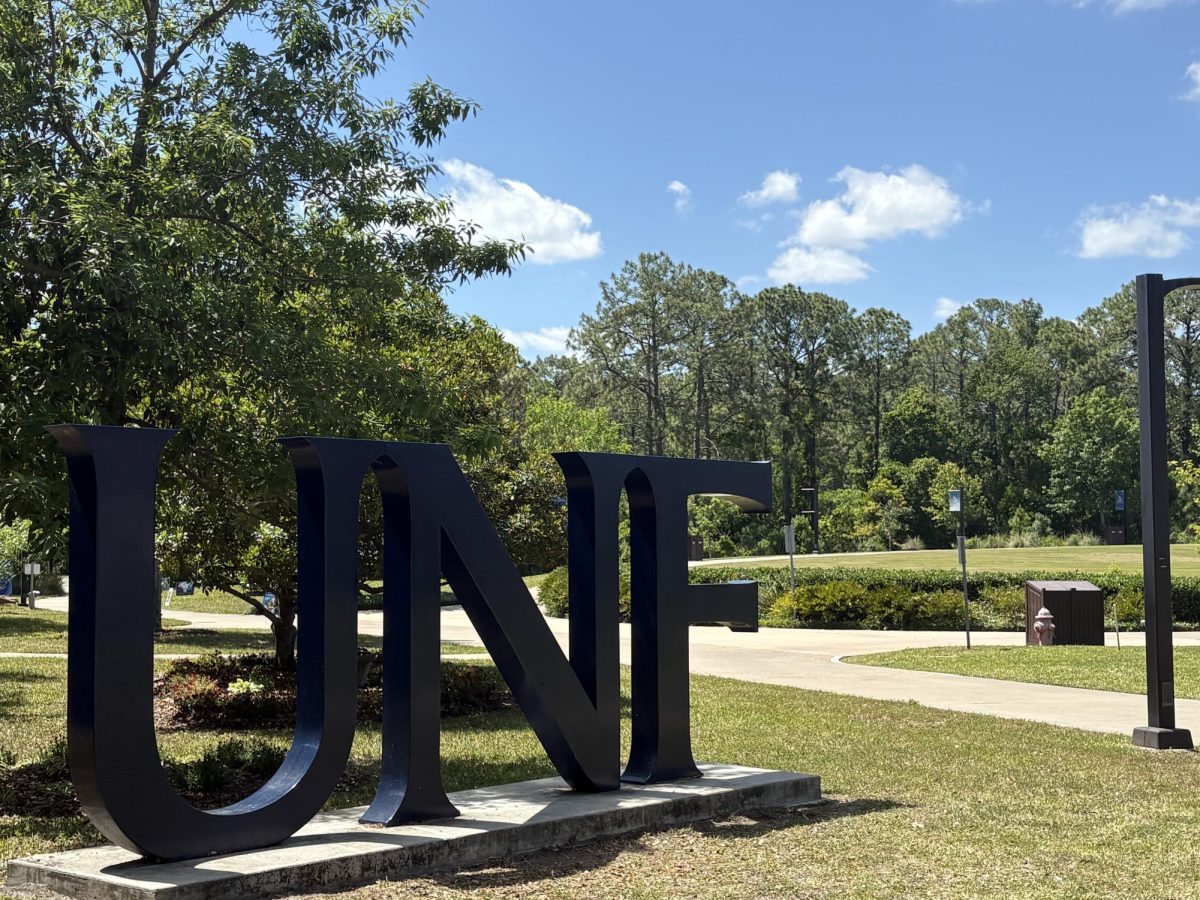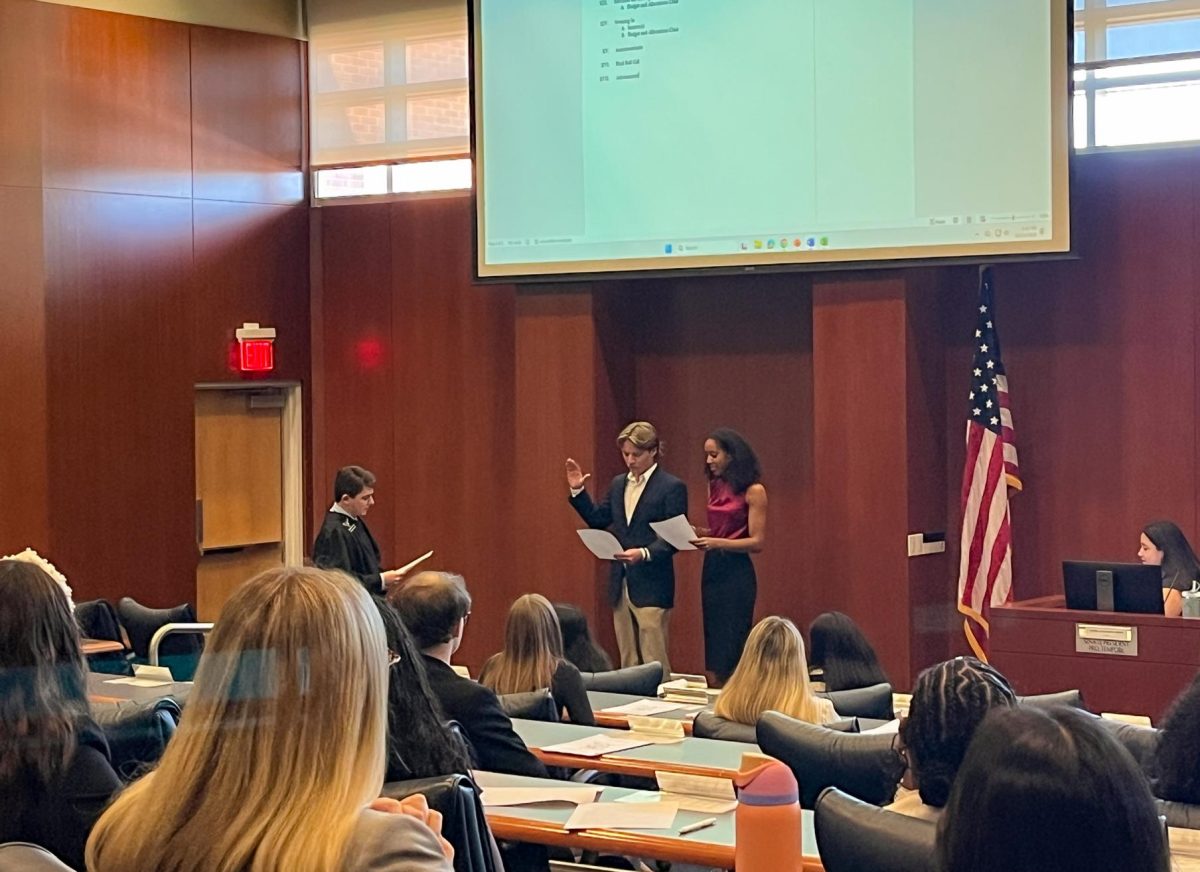 Textbook legislation attempts to make prices reasonable
Textbook legislation attempts to make prices reasonable
Publishers and faculty urged to make price a priority, but only students can make a real difference
August, along with sunshine and new beginnings, is also the epicenter for heaps of education-related expenses for students to wade through. High on the list of costly expenses, once you’ve dished out thousands in tuition to UNF and found a place to lay your soon-to-be bulging head, is textbooks.
The average amount students spend on textbooks hovers around $900 per year, according to the Student Public Interest Research Group. That comes to approximately one-fifth of a full-time UNF student’s tuition this fiscal year, and prices continue to rise.
In a 2005 study by the Government Accountability Office, it was found that textbook prices have tripled since the 1987-88 school year, at over two and a half times the rate of inflation.
This rapid increase, on top of already increasing tuition rates, forces students to make some tough decisions. Some are forced to avoid bookstores altogether.
“My friends at UNF and even other universities don’t even bother purchasing textbooks anymore because of the fact that they are so expensive to purchase,” said UNF advertising senior Madeline Edwards.
Others maintain that textbooks are crucial to the learning process.
“If I didn’t have a textbook on what my professors were teaching there would be no way to solve these math problems,” said civil engineering senior Jerry Taricska.
With frustrations festering among frugal college students, legislation went into affect in July of 2010 that’s meant to help ease this burden.
The Higher Education Opportunity Act (HEOA) was amended to include a section related specifically to textbook information (H.R. Bill -1437 Sec. 133).
The legislation considers two main points. First, it requires textbook publishers to provide college and university faculty with a price for a book, information on previous editions, and information on alternative formats.
A major complaint of students and faculty regarding textbook pricing is publishers’ frequent edition changes, with sometimes a questionably small amount of content change.
“There’s got to be a real reason to switch between books year to year,” said associate professor of leadership and counseling Terence Cavanaugh.
Professors who base a curriculum on a textbook may have to revamp a whole class when editions switch, he said.
Senior sales representative for national publisher McGraw-Hill, Onke Murdono, said the publisher requires “20 percent or more changes” in a textbook to come out with a new edition.
Once they do come out with a new edition, Murdono said, they stop printing the old one, but they will sell it as long as it’s still in stock.
New editions also cost students more money. When publishers only have the new edition of a book available, it eliminates the option of buying used books online because there are no used books, yet, Cavanaugh said.
The bottom line for HEOA is to save students money. The idea being that with more information available to professors as they select required textbooks, they will make sounder economic decisions.
However, not every professor sees it that way.
“You’d be surprised,” Murdono said. “I’d say 25 to 30 percent of professors don’t care about price.”
The reason for this, Murdono said, is that professors usually do not want to change their prep work.
The second aspect of the textbook information section of HEOA deals with what faculty provides students.
Faculty must disclose the International Standard Book Number and retail price information of their required and/or recommended books. A 2010 Florida statute on textbook affordability (1004.085) takes it even further, requiring this information to be posted at least 30 days prior to the first day of class.
The UNF Bookstore, owned by Follett Corp., requires notice 45 days before classes begin. Having that information in advance means they can organize and disseminate information to students through its online software, BookLook, which can link directly from students’ MyWings accounts.
In theory, this will grant students ample time to search for affordable options by which to purchase textbooks online or elsewhere.
So, a year after the bill went into affect, is it working?
According to Murdono, in the past 12 months, he estimates 70 percent of professors began to care more about how they can help students save money.
The Biology Department makes it a priority to judiciously select textbooks that are both relevant and cost-effective, said Biology Department Chair Courtney Hackney. “We like to think that we provide a good combination of appropriate texts for a relatively low cost.”
However, three of the four professors that responded to the Spinnaker’s email survey had either not heard of or not read HEOA.
There are more options available to students trying to avoid the traditional bookstore. Digital e-books, textbook rentals such as Follett’s Rent-A-Text, free textbook trading forums and sites like finderscheapers.com, which lists the cheapest books from all textbook websites its site, are helping students find cheaper options.
Possibly the most promising option is open-source textbooks. This relatively new textbook format provides students and faculty with mostly base-level course textbooks for free online.
Professors can use what they want from open-source books, remove pieces, rearrange the books and insert their own material to match the course.
They are general knowledge books, not overly specific, Cavanaugh said.
“The ideal end is to have all open-source books for all required courses in the first two years [of college],” he said.
Living in a country often mused by efforts to make fortunes, it’s uncommon that well-to-do authors allow their work to be used for free online. But Cavanaugh considers it part of his civic duty.
“As a professor, it’s part of your professional responsibility to write and publish,” he said. “If I’m looking for tenure and promotion, it shows up.”
Moreover, authors publish publicly to gain experience and spread their name. Even doctoral programs are getting in on the act, publishing open textbooks online as a group.
Florida has its own digital repository of open textbooks: the Orange Grove, which is supported by the Florida Distance Learning Consortium and a partnership of the University Press of Florida. Orange Grove Text Plus allows anyone to download entire textbooks for free or print them for a small fee.
However, very few are participating at UNF, and the numbers are still fairly small around the state, said UNF’s Center for Instruction and Research Technology Director Deb Miller.
“This is still evolving,” she said.
But open-source options can inspire change in other ways.
“Publishers are pushed to alter the traditional model because they want to compete,” Miller said.
Of course, open-source textbooks won’t be successful without support drawn from students.
“Part of the problem is there is no sales rep. for open source — it has to come from the students,” said Cavanaugh.











